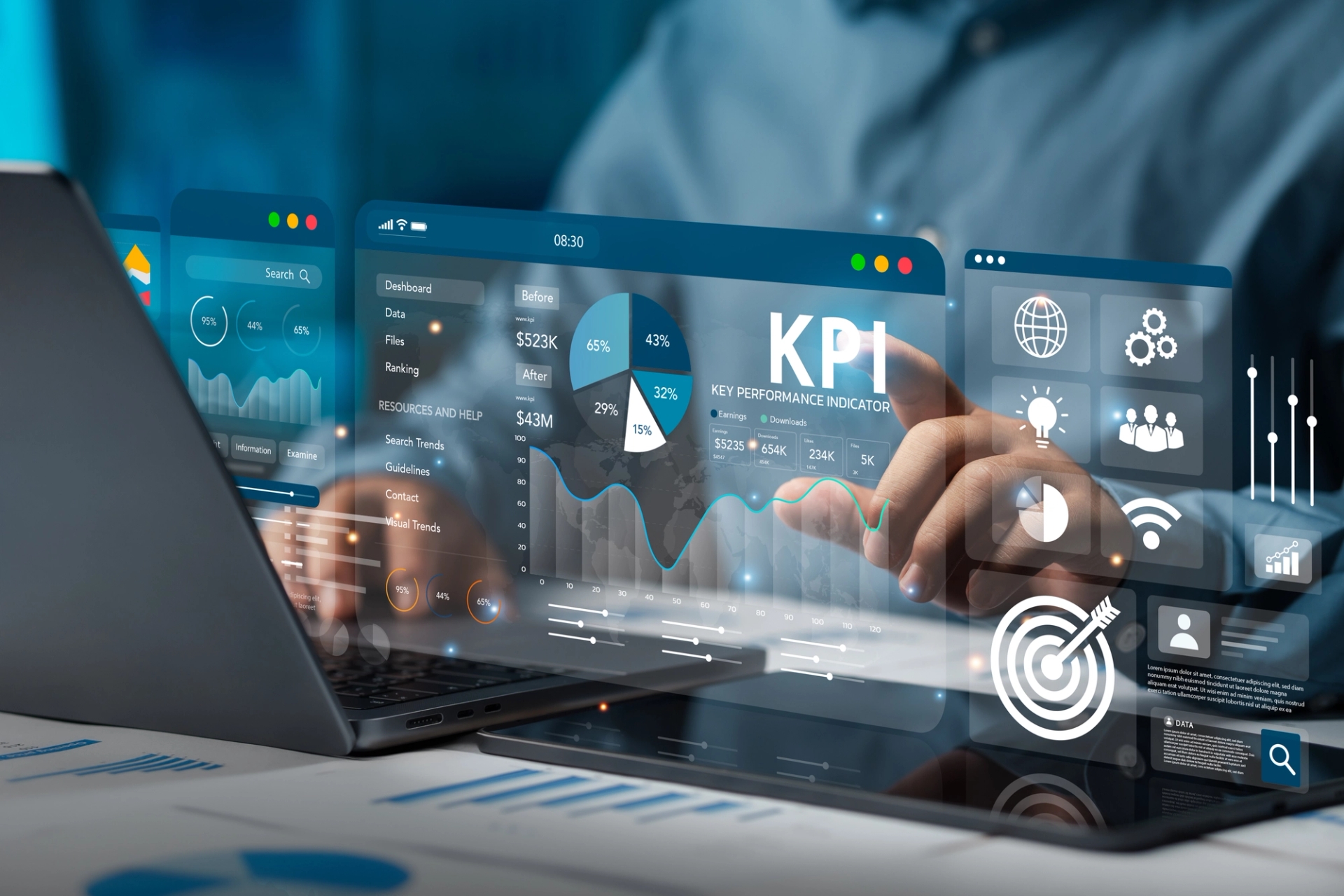Event Logistics Budgeting Secrets: 6 Steps to Avoid Financial Surprises
Discover practical tips for managing your event logistics budget effectively. Learn to optimize costs and enhance your planning. Read the article now!

Introduction: Your Complete Guide to Logistics Budget Buckets, Event Costs & Effective Budget Management
An effective event logistics budget isn't just about cost-cutting—it’s about aligning operational efficiency with a great attendee experience. Whether you're managing a multi-venue summit, a destination event, or a hybrid setup, the logistics budget plays a crucial role in financial stability and seamless execution.
In this guide, you’ll learn:
- How to create an event logistics budget from the ground up
- Key expense categories tied to event logistics
- Recommended allocation percentages based on event format
- Hidden logistics costs that derail budgets
- How to stay agile with dynamic forecasting
- Tactical tools to manage logistics budgets efficiently
Why a Clear Event Budget Structure Matters for Managing Event Expenses
Logistics are the engine behind a successful event—but without structured budget planning, even the best-laid plans can fall apart.
A well-planned logistics budget helps event planners:
- Keep operations aligned with the event's objectives and scope
- Manage event expenses across fixed and variable costs
- Maintain healthy cash flow and avoid financial surprises or budget overruns
- Drive vendor accountability with transparent deliverables
- Enable smarter decisions with real-time cost visibility using event management software
- Optimize event roi by focusing spend where it matters across the event lifecycle
In short, effective budget management gives event organizers the clarity to allocate funds wisely, stay prepared for unforeseen expenses, and deliver a seamless in person event experience or hybrid activation.
Step 1: Define Your Total Budget Range to Create an Event Budget with Positive Cash Flow
An effective logistics budget should address all financial aspects of event planning—from venue rental and catering to staffing, security, and vendor payments.
Before diving into logistics-specific allocations, you need financial guardrails. Start by identifying:
- Total logistics budget: Typically 40–60% of total event expenses, depending on event size and complexity
- Per-attendee logistics cost target: A crucial benchmark to create an event budget that adapts to audience size
Formula:
Logistics Budget ÷ Estimated Attendees = Cost per Head for Logistics
This calculation supports event budget based decision-making and helps event planners align their spend with core drivers of the event's success.

Step 2: Allocate Budget Buckets Using an Event Budget Template to Control Event Costs
Break your logistics budget into clear categories of fixed costs, variable costs, and expenses related to core operations—not aesthetics. Though not part of the logistics spend, aligning your marketing budget with logistics planning ensures cohesive messaging, on-ground branding, and audience flow.
Use an event budget template to track each component across the event planning process.
1. Venue & Site Infrastructure (25–30%)
Includes essential costs related to your event footprint:
- Venue rental, power, water, internet, sanitation
- Permits, insurance, structural setup
- Parking coordination and attendee flow
- Critical venue costs that can make or break your event
Tip: Start early to secure discounts, avoid unnecessary costs, and negotiate packages that fit your event finances.
2. AV & Technical Setup (15–20%)
Tech powers the in person events and enables virtual and hybrid events alike:
- Lighting, sound, screens, live streaming
- Event technology and uplinks for virtual attendees
- AV crew, backup systems, and real-time support
Use event management software with production integrations to reduce friction and effectively manage AV coordination.
3. Staffing & Operations (10–15%)
Staffing is often underestimated, leading to unexpected costs:
- Load-in/load-out labor, on-site staff, vendor liaisons
- Volunteer coordination, uniforms, shift meals
- Management of guest speakers, keynote speakers, and operational teams
- Plan shifts during your budget planning phase to balance headcount with projected attendee volume.
4. Transport & Warehousing (5–10%)
A hidden line item with rising transportation costs:
- Equipment delivery and returns
- Storage, warehousing, pallet handling
- Local shuttle movement or logistics team mobility
Careful pre-event routing helps reduce costs and avoid unforeseen circumstances like delayed freight or missing setups.
5. Security, Compliance & Health (5–8%)
For both legal compliance and attendee safety:
- Security staff, crowd management, first aid
- Emergency protocols, barricades, detection systems
- Crisis communication systems in case of incidents
These potential expenses are non-negotiable and crucial for financial success—not just insurance purposes.
6. Signage & Communication (3–5%)
Key to wayfinding and emergency alerts:
- Directional and branding signage
- Walkie systems, command center comms
- Public announcements and mobile alerts
Allocate this early to avoid last-minute event costs and benefit from bulk promotional materials printing.
7. Contingency Fund (5–10%)
Even the best-planned event budgets encounter unforeseen costs:
- Weather delays, vendor cancellations, damaged setups
- Delays in catering deliveries or tech glitches
- Replacement of broken signage, tables, or gear
Keep this labeled as “projected expenses buffer” to build confidence with your team and financial support stakeholders.
Step 3: Customize Your Logistics Budget Based on Event Type, Scale, and Event Expenses
Creating an effective event budget means aligning logistical spending with your event’s scope, delivery format, and audience expectations. Different formats come with dramatically different event costs, resource needs, and risk profiles.
Large-Scale In-Person Events (1,000+ Attendees)
For in person events, logistics quickly become the backbone of execution. Here's what to expect:
- Venue costs and AV requirements often consume up to 50% of the logistics budget
- Significantly higher labor costs for security, utility handling, crowd control, and setup
- Additional expenses related to zoning, permits, waste disposal, and traffic management
- Add a contingency fund of 10–15% to manage unforeseen expenses like weather, late-night shifts, or permit delays
- Careful planning ensures you allocate resources effectively and avoid budget overruns
Virtual and Hybrid Events
- Allocate 30–40% for streaming platforms, technical production, and IT support
- Budget for virtual help desks, speaker kits, and production-grade backdrops
- No catering costs or transportation costs, but expect higher spend on tech infrastructure and audience engagement tools
- Use event management software to monitor digital touchpoints and optimize the event planning process
Destination or International Events
Planning global or destination events brings in added layers of event expenses and operational complexity:
- 20–30% of your logistics budget may go into travel arrangements, customs clearance, and accommodation
- Plan for translation services, local event organizers, and legal permits
- Consider cultural consultants and international insurance as part of your financial resources planning
- Ticket sales and local partnerships may offer financial support to offset regional costs

Step 4: Look out for Hidden Event Costs & Expenses which Event Planners Often Overlook
One of the biggest pitfalls in budget planning is failing to anticipate potential expenses. Overlooking these smaller but essential costs can lead to major budget overruns or even compromise your event’s success.
Setting aside a contingency fund is critical to manage unforeseen costs such as last-minute equipment rentals, emergency repairs, or unexpected staffing needs.
Commonly missed event costs include:
- Venue-specific upgrades like Wi-Fi boosters, hardline connectivity, or backup power
- Unionized labor at large or international venues
- Weather-proofing logistics: drainage mats, tenting, and covered walkways
- Guest speaker accommodations: VIP transfers, green rooms, and hospitality
- Printing costs for wayfinding maps, promotional materials, and backstage credentials
- Sustainability needs like eco-waste management, especially for urban venues
- Specialized training for logistics and emergency response crews
Pro Tip: Add a contingency fund to your event budget template specifically for unexpected costs and unforeseen circumstances—this is your insurance against financial surprises.
Step 5: Stay Agile with Dynamic Forecasting and Effective Budget Management
To avoid unnecessary costs and overspending, effective budget management requires real-time adaptability. Reviewing data from past events helps identify areas where costs exceeded projections and refine future budget allocations more accurately.
Here's how to keep your event finances flexible:
Rolling Forecasting Methods
- Scenario Forecasting: Build three versions of your logistics budget—Best Case, Realistic Case, and Worst Case—to help you allocate funds wisely based on varying event goals
- Reforecast Regularly: Update your logistics spend every 2–4 weeks as quotes, RSVPs, and external costs change
- Cost-to-Impact Tracking: Measure how well logistics spend supports ticket sales, satisfaction, or attendee movement
- Cost per Movement Metrics: Track how much each shipment, staff shift, or vendor handoff costs in practice—not just in projections
This allows you to effectively manage your financial strategy while staying aligned with your event’s objectives and driving a successful outcome.
Step 6: Tactical Tools to Optimize Logistics Costs and Cash Flow
Great event planners don’t just create an event budget—they stress-test it using tools that reveal inefficiencies, secure better deals, and drive smarter allocations. Use these techniques to ensure financial success:
Practical Tools for Smarter Budgeting
- Venue Heat Maps: Visualize AV needs, staffing clusters, and power access to avoid overspending in low-traffic areas
- Access-Window Labor Planning: Short venue access windows = high surge pricing. Negotiate smarter entry times to reduce costs
- Vendor Shadow Pricing: Always get a second quote—even from a non-preferred vendor—to expose hidden fees
- Movement-Based Budgeting: Calculate logistics cost per shipment, handoff, or storage zone—helps you allocate resources effectively
- Permits & Fines Buffer: Allocate ₹5K–₹25K to avoid delays from missed NoCs, licensing, or safety inspections
- Logistics Risk Simulation: Ask vendors to list their weakest link (e.g., staff shortages, broken lifts) and selectively budget for backup—not redundancies
- Real-Time Weather Monitoring: Platforms like AccuWeather or IBM Weather give you a 10–14 day forecast—budget dynamically for tents, rerouting, or outdoor gear
All these strategies enhance your ability to manage event expenses, maintain cash flow, and protect your event ROI—especially for future events where past learnings can drive more money toward outcomes that matter.

Final Thoughts: Build an Effective Event Budget for Long-Term Savings and Event Success
A logistics budget isn’t just about spending wisely—it’s about thinking ahead. With meticulous planning, clear allocations, and a buffer for unforeseen expenses, you create the backbone of a successful event.
Make your logistics budget flexible, measurable, and aligned with your event goals. That’s how you deliver seamless experiences without stretching resources—or sacrificing quality.
Start budgeting smarter today. Use Azavista’s powerful event management platform to streamline your planning process, manage event expenses in real time, and deliver a financially successful event—without compromising quality.
More Event Management












